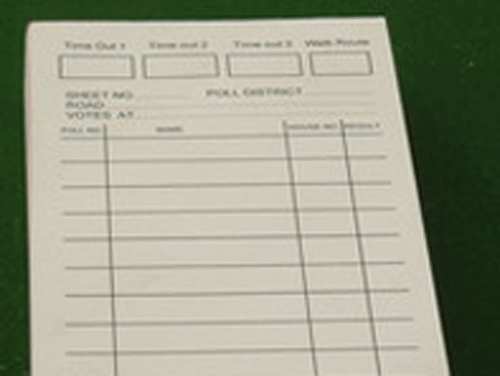
Winning local elections is usually about differential turnouts
In many places we don’t have a “natural” majority of the electorate. If everybody who voted in the General Election voted in the local elections we would lose the local election. However many general election voters don’t vote in local elections and some will vote differently locally and nationally. The key to winning locally then is getting more of our voters to the polls than our main opposition.
To do this we create a list of those who are most likely to vote for us (the Shuttleworth) and try and get them out to vote (either as a postal voters or on polling day). This process is called GOTV (Getting Out The Vote) . It is principally accomplished by “knocking up” – the process of knocking on the doors or phoning voters and reminding them
- that it’s polling day
- that their vote is crucial and we can win
- that we can give them a lift to the polls
- that if they have a postal vote it’s not too late to use it
This article is about how you make sure that your “Shuttleworth” is big enough to allow you to win. Its absolutely essential that you do this before polling day.
First look at previous election results. How many votes does it normally take to win in the ward?
Let’s say for the purposes of this article that number is 1200 in Happy Ward. You need to consider the percentage of your Shuttleworth you have managed to get to vote in previous local elections (evidenced by the marked register) together with any expected variations in overall turnout that might raise the bar. Let’s say you normally succeed in getting two thirds of your Shuttleworth to vote, then, if turn out is expected to be similar in Happy Ward, you would need to aim at having a Shuttleworth of 1800 or more.
This would mean that if you failed to get 1/3 of your Shuttleworth out to vote you should still win.
Ideally you should aim at having 1800+ definite supporters from this year’s canvassing but in reality this is rarely the case and you need to include other groups who are disproportionally likely to vote for us to make up the required number.
1. Those to include:
The pecking order is roughly as follows, but everyone’s shuttleworth is different:
- Definite and Probable supporters canvassed this year
- Definite and Probable supporters canvassed from previous years (historic support)
- Soft canvass support (people who ticked boxes on surveys, petition signers etc)
- People you’ve done casework for.
- Third/fourth/fifth party supporters you want to squeeze – even if they voted for their preferred party rather than us its does not damage us directly and if we can persuade them to lend us their vote – even on polling day – then it can make all the difference.
- Other groups that your campaign had identified a significantly more likely to vote for us than against. Perhaps students and Asian voters in previous years. Who has been responding well to your campaigning?
Beyond Definites and Probables all these additional groups are worth testing both in cross tabs in Connect or the comparatives in EARS to see if they significantly, differentially “break” for us. If yes, include them. Why not phone canvass 20 random individuals from group to check. If not, exclude them.
2. Those you then need to exclude
- Dead
- Moved
- Not eligible (too young or the wrong register category)
- The “Not Lib Dem” category in current canvass
- Recent “Not Voting”
- Your principal opponent in current canvass
If you want help or advice (and you are an ALDC member) don’t hesitate to give us a ring
 In Connect
In Connect
In Connect its slightly different but the principles remain the same. You need to
- select the groups who should vote for us (canvass analysis AND most recent voting intention) plus anyone else like casework people
- remove Not Lib Dem , not voting and hard main opposition from current canvasss
- remove people who have voted (telling information) or told us they have voted or not voting
The detailed process is described in both the video and PDF guides (see below) but in principle;
In Connect you need to be aware of the distinction between the canvass analysis categories, like “Strong Lib Dem”, “Lib Dem” and “Weak Lib Dem” and the latest canvass information in the Question “Master Party ID”. Both need to be included in your Shuttleworth; instructions are in the PDF guide below. If you have created your own local questions, these need to be mapped to make sure they affect Master Party ID and Canvass Analysis. If you haven’t done this yet, put the name of the question into a Support Request within Connect.
As the canvass analysis categories can include people who usually vote for us but are not intending to at this election, we need to specifically exclude those people. So you need to remove those who in the current canvass information in the Question “Master Party ID” are flagged as your main opposition or “Not Lib Dem” if it is present.
It is important for the smooth running of Connect nationally and locally that you create an initial local shuttleworth fixed list and then have a dynmanic list based upon it during the day.
Connect Polling Day Online Training
you can get help to prepare your shuttleworth by watching the training videos on www.libdems.org.uk/oskar and downloading the Polling Day Quick Sheet Guide .
Further Connect Advice
If you need help on these or any other Connect issues, the Connect User Facebook Group has over 500 users and is a great place to ask questions and share ideas. To join, search for ‘Connect Users’ on Facebook or contact the Party’s Digital Support Officer: